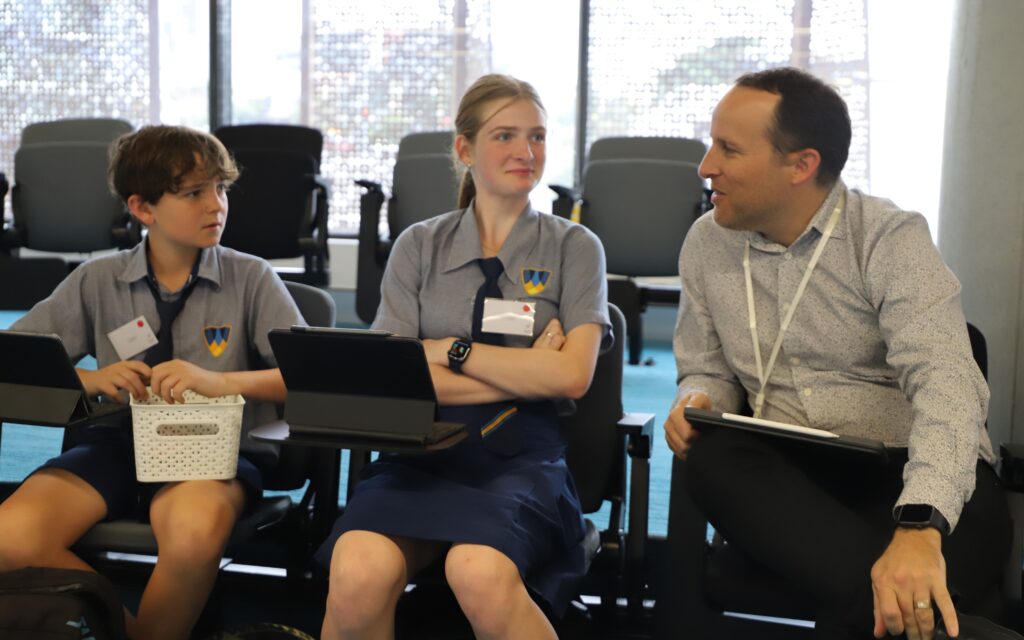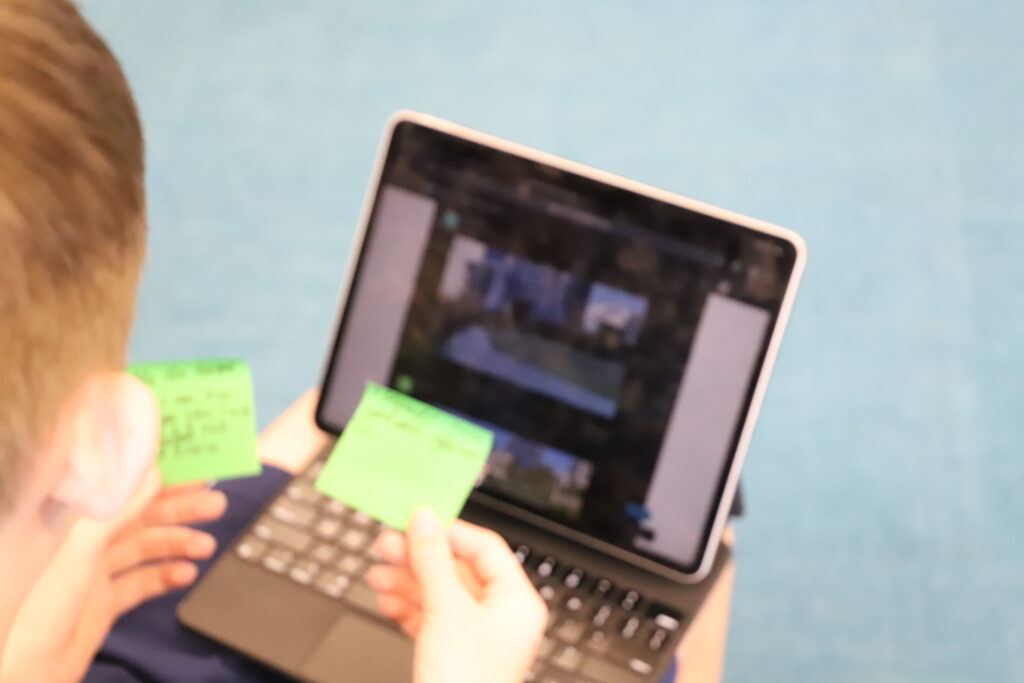
The Thriving in Vertical Schools (TVS) research team has completed data collection in the first iteration of research activities to develop three vertical school case studies. The team is analysing the data collected through intensive research activities in Fortitude Valley State Secondary College (FVSSC), Queensland’s first urban vertical school. The project aims to understand how urban vertical learning spaces support students’ capability and wellbeing.
The data collection was initiated earlier this year and integrated with the school’s curriculum designed by TVS researchers to be delivered in consultation with school staff. In July, the research team facilitated year 8 students’ participation in research activities and workshopped different approaches to storytelling.
The participation of FVSCC in the TVS ARC Linkage project extends the ongoing partnership between QUT and the school. As QUT’s Relationship Manager with the school and member of the research team, Dr Prue Miles regularly visited the school and classes to check student engagement with the curriculum. She observed students immersed in the collaborative filming and editing process.
“During my visits I encouraged the students to consider a range of creative genres and reinforced the importance of their unique perspectives,” she said.
“Feedback from teachers indicated that all liked having a regular university guest as this added more validity to their authentic learning experiences.”
At a Student Showcase, videos produced by student groups in class were presented. The videos explored what and how spaces and experiences at the school support thriving. This builds on workshops with students earlier in the year when they explored what thriving means to them. As part of the Student Showcase, the videos were presented to project partner representatives who were involved in the design, construction and pedagogy of the school. The student videos provided the project partners with rare insight into the student experience of the school with the Showcase providing a platform for exchanging and valuing diverse ideas and perspectives.
Student experience and student voice are at the heart of the project. Associate Professor Jenna Gillett-Swan said that a research focus on student voice means that the interests and priorities of young people are driving the direction of the research and what they feel is important for others to know about.
“It has been such a privilege to be part of the conversations that the young people participating in this project are having with us and one another about their school experiences,” she said.
“The students enjoyed having the time and space to reflect with one another and hear about others’ views and experiences. Their insights help to direct our focus to matters of relevance and significance for those in the school community. We will be able to explore these ideas and insights more deeply in future project stages.”

The research design also included an online survey, interviews with design and education leaders involved in the school development and operations, and focus groups with students and teachers. Data collection at FVSSC has resulted in a large dataset comprised of participant generated information including 12 videos, 125 survey responses and 294 online forum entries. The data will be analysed to identify the links between student capability and the vertical building design.
Project Lead, Associate Professor Jill Willis described the research design as highly innovative and collaborative with a focus on ensuring that project partners are part of the knowledge creation process.
“This collaboration is a rare opportunity for school leaders, architects, builders and furniture designers to learn from each other, and from students about their everyday experience in innovative school environments,” she said.
“The student stories and ideas have prompted some deep thinking about what is important for school to be a place where everyone thrives. This can inform current and future designs and school decisions.”
TVS also seeks to understand typological dynamics of vertical schools. Professor Jill Franz is leading theory building as part of the project and undertaking observational post-occupancy walkthroughs of the schools. In the first of these, researchers documented sensory impressions of the school.
Professor Franz explained that recent research and conversations about vertical schools only succeed in adding to confusion about vertical schools as they use terms vertical, mid-rise, and high-rise interchangeably.
“Understanding a vertical school typology based on the number of storeys is limited as mid-rise or high-rise schools have existed for decades,” she said.
“Height has significant implications for managing movement and circulation and students are telling us about how this impacts them.”
In 2023, the data collection process will be rolled out in the three schools partnering in the project with further data collection at Fortitude Valley in 2024.
Photo caption (top): Cox Architecture’s Steven Harth speaks with students at the FVSSC showcase.